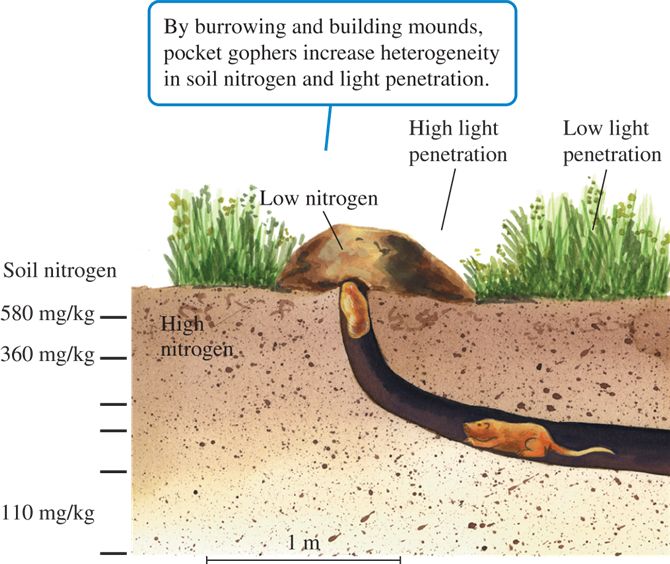 |
| Previous Image | Next Image |
| Description: As we saw in chapter 16, burrowing animals, such as ground squirrels and pocket gophers, affect local plant diversity. These burrowers also alter the distribution and abundance of nitrogen within their ecosystems. Pocket gophers can significantly affect their ecosystems because their mounds may cover as much as 25% to 30% of the ground surface. This deposition represents a massive reorganization of soils and a substantial energy investment, since the cost of burrowing is 360 to 3,400 times that of above-ground movements. Estimates of the amount of soil deposited in mounds by gophers range from 10,000 to 85,000 kg per hectare per year. Nancy Huntly and Richard Inouye (1988) found that pocket gophers altered the nitrogen cycle at the Cedar Creek Natural History Area in Minnesota by bringing nitrogen-poor subsoil to the surface (fig. 20.18). The result was greater horizontal heterogeneity in nitrogen availability and greater heterogeneity in light penetration. These effects on the nitrogen cycle in prairie ecosystems help explain some of the positive influences that pocket gophers have on plant diversity.
Picture Stats: Views: 1124 Filesize: 75.85kB Height: 564 Width: 670 Source: https://biology-forums.com/index.php?action=gallery;sa=view;id=2050 |
